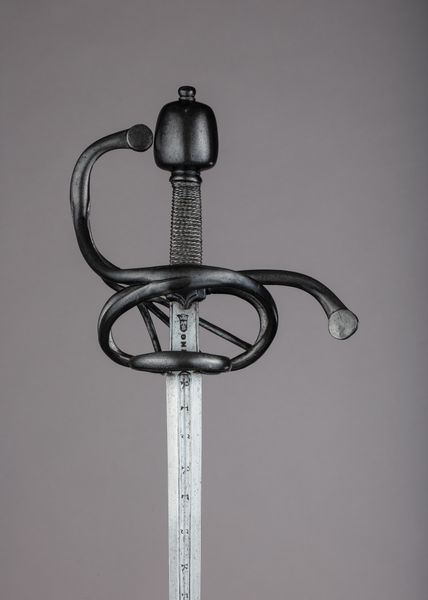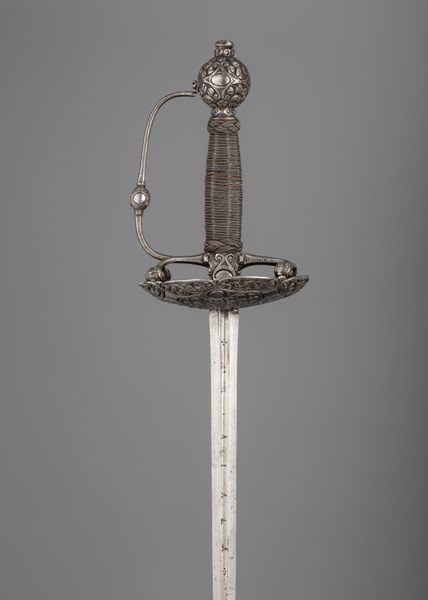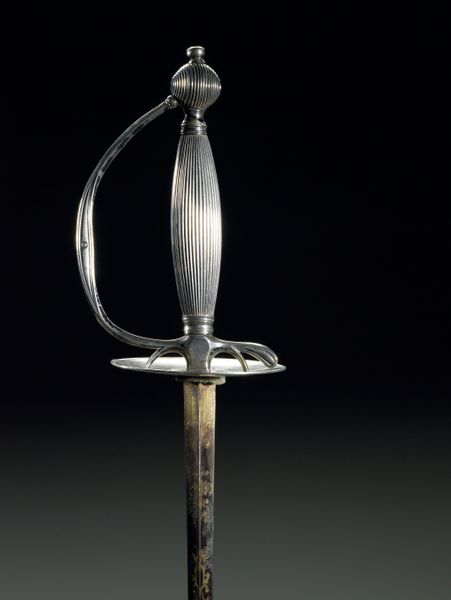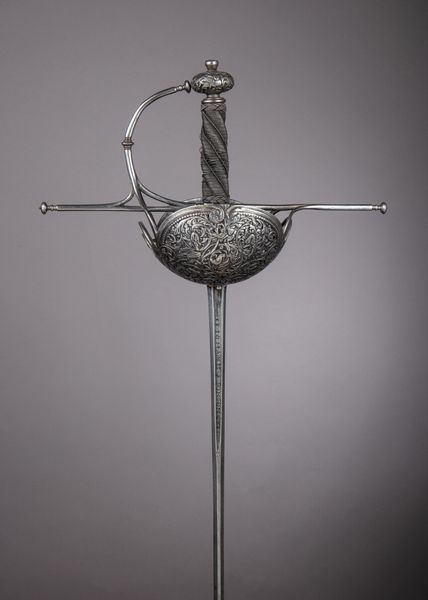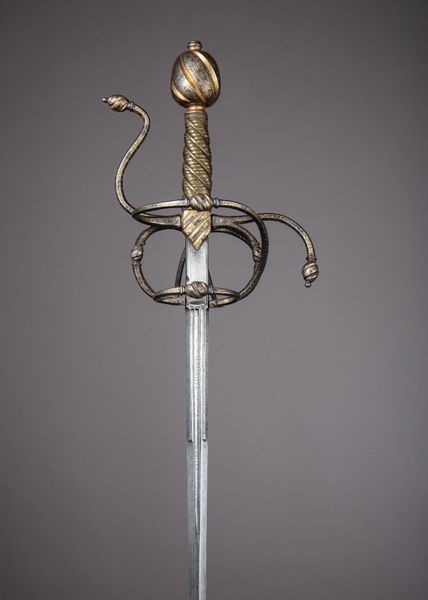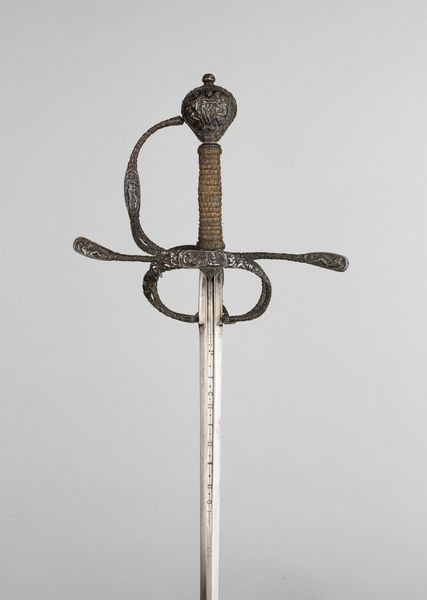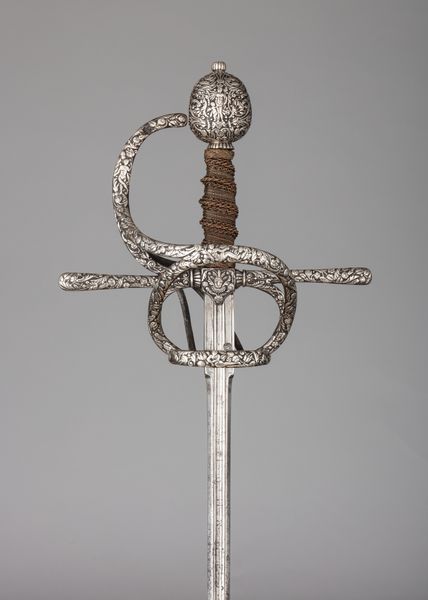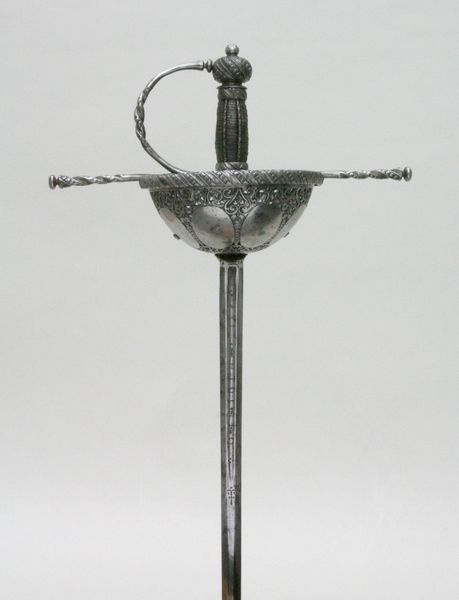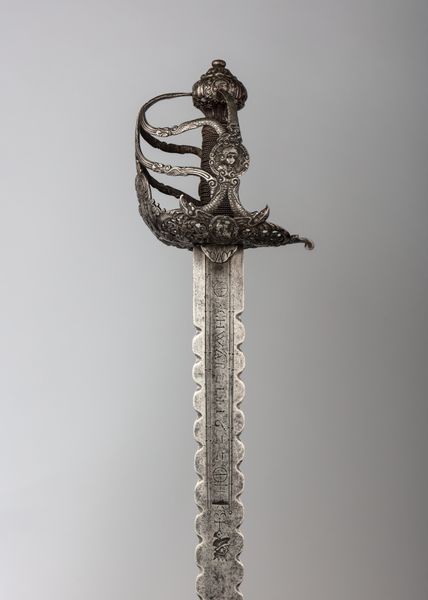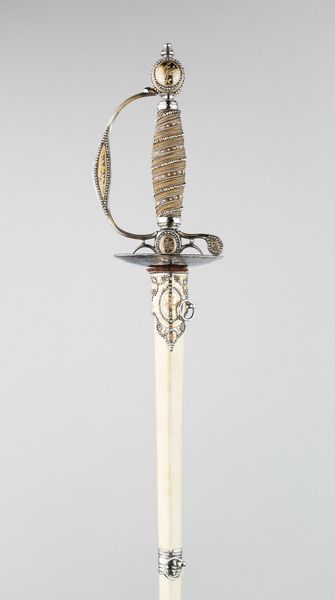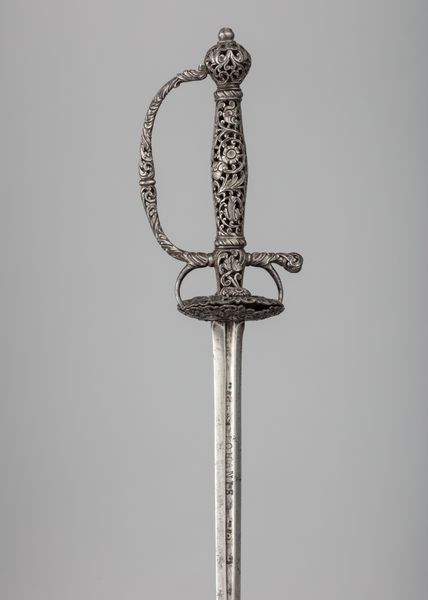
steel, metal, sculpture
#
steel
#
medieval
#
metal
#
sculpture
#
form
#
sculpture
#
line
#
history-painting
#
armor
#
sword
Dimensions: L. 49 1/2 in. (125.7 cm); L. of blade 43 in. (109.2 cm); W. 8 1/2 in. (21.6 cm); D. 5 in. (12.7 cm); Wt. 2 lb. 10 oz. (1190.7 g)
Copyright: Public Domain
Curator: Well, look at that. There’s a certain… balletic grace to it, isn't there? A fierce, frozen dance. Editor: Yes, that’s certainly one way to read it. What we’re looking at is a rapier dating from the period between 1600 and 1650. It is currently held at the Metropolitan Museum of Art. Predominantly constructed of steel and metal, this functional object transcends its utilitarian purpose to become a fascinating artifact steeped in both history and artistry. Curator: Artistry, indeed! Notice the hilt; it's a delicate cage. Almost like capturing the essence of conflict in a beautiful trap. All that intricate weaving and precise crafting--you'd almost forget what it's actually for. I keep wondering about the artisan... Editor: Ah, precisely. Consider the labor involved, the metallurgical techniques passed down through generations of artisans. The mining of the ore, the forging of the steel, the crafting and assembly, each step laden with social and economic implications. This wasn't some mass-produced trinket; each rapier represented significant investment, bespoke craftsmanship indicative of social stratification. Curator: It really brings the past so close. The cool, hard metal speaks volumes. It conjures stories of power, elegance, and...well, violence. This would be more than a weapon. More of a fashion statement? An expression of identity. Editor: Exactly! The materials speak volumes about trade routes, resource control, and the societal value placed on craftsmanship and martial prowess. It serves not just as a tool of combat, but also as a potent signifier of social status, power, and individual identity. Curator: Amazing! Thinking of the craftsperson—it’s really hard not to fantasize a story about this sword and their hands when I consider all this… thanks for this material perspective. Editor: My pleasure. Understanding the material conditions and production processes behind objects like this allows us to delve deeper into understanding the past.
Comments
No comments
Be the first to comment and join the conversation on the ultimate creative platform.
